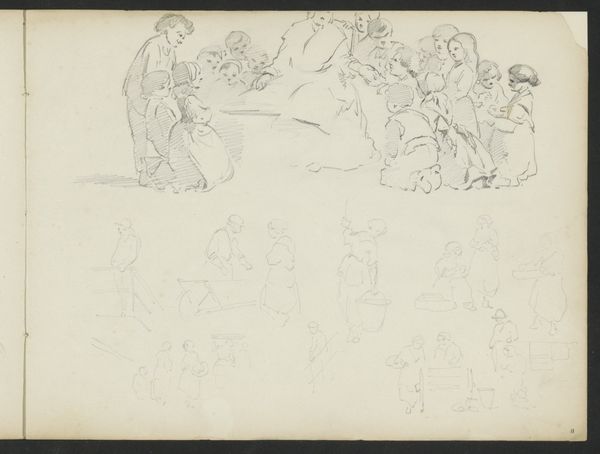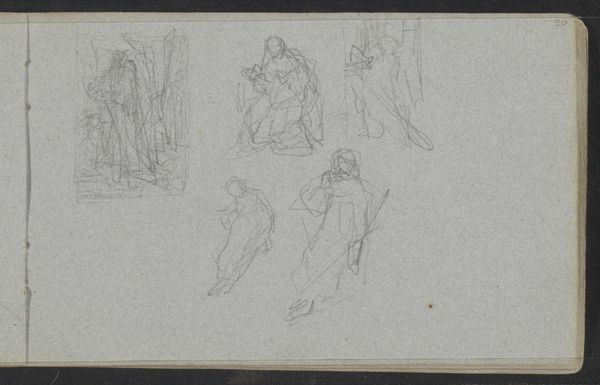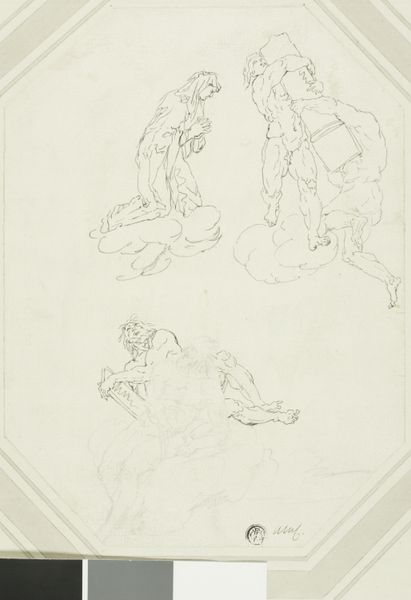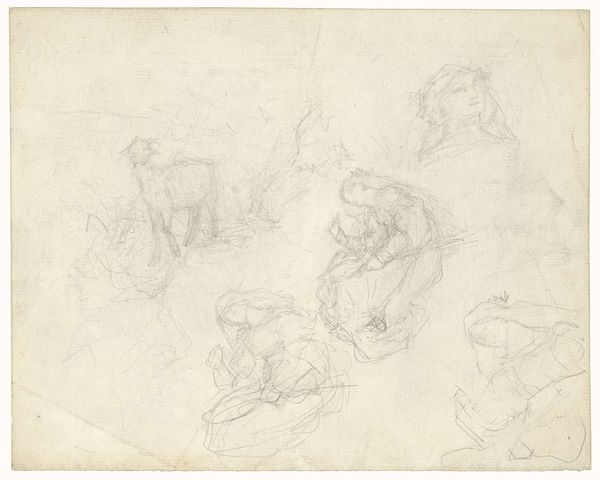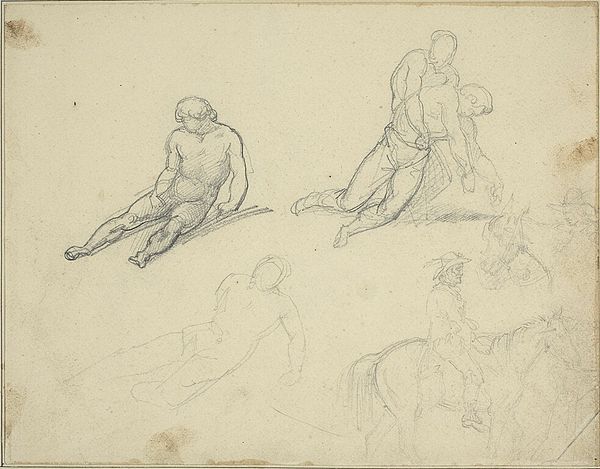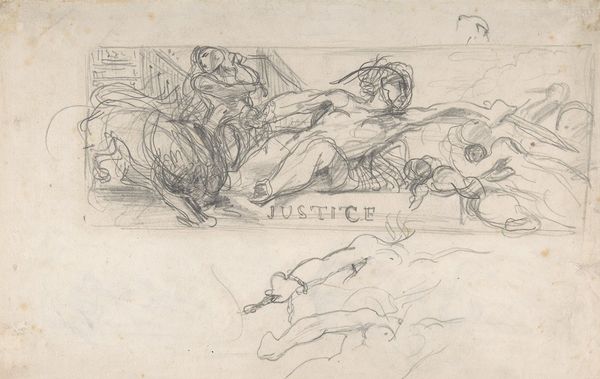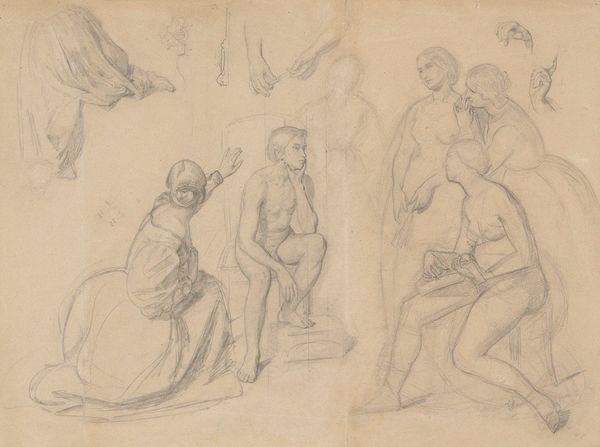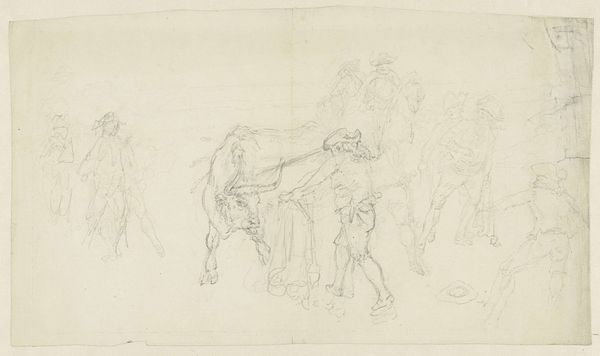
drawing, pencil
#
portrait
#
drawing
#
dog
#
figuration
#
romanticism
#
pencil
#
genre-painting
Copyright: Rijks Museum: Open Domain
Editor: Here we have "Study Sheet with Women, Girls and Dogs," a pencil drawing by Charles Rochussen, made sometime between 1840 and 1860. It's quite sparse and sketch-like, but what strikes me is how casually these figures are arranged; like fleeting observations of daily life. What do you see in this piece? Curator: Well, as a materialist, my attention is immediately drawn to the paper itself and the way the artist has engaged with it. Consider the texture of the paper and how Rochussen's pencil marks interact with that surface. It’s a study sheet, a space of artistic labour where Rochussen is actively problem-solving – capturing glimpses of human figures, children, and animals, seemingly preoccupied with capturing how bodies occupy space. What kind of social class do you imagine is depicted? Editor: I would guess middle class, based on the clothing in some of the sketches and the leisure implied by the dogs. Curator: Precisely. This depiction provides insight into the social life of the burgeoning middle class and the evolving roles and representations of women. But look closer. What is being consumed? What’s being discarded? How are these images circulated and consumed? Think about the rise of print culture during this time. How might this drawing connect to that larger system of production and dissemination? Editor: I hadn't considered that aspect. It's not just about *what* is depicted, but how these sketches themselves might be products within a wider cultural and economic framework. I am wondering how widely were sketches circulated. Curator: Good question! These sheets would serve different purposes and be shared among a variety of social settings. It allows a new perspective to better think about both the creative labour and its relationship to material conditions. Now what do you make of Romanticism here? Is there a story that each of these “vignettes” alludes to, or rejects? Editor: I guess it reframes my understanding. Before, I saw fleeting moments captured artistically. Now I also consider the socioeconomic aspect embedded within the medium and its subjects. Curator: Exactly. And considering the material processes involved—from paper production to the artist’s hand—gives us a richer appreciation for this drawing and its place in the world.
Comments
No comments
Be the first to comment and join the conversation on the ultimate creative platform.

